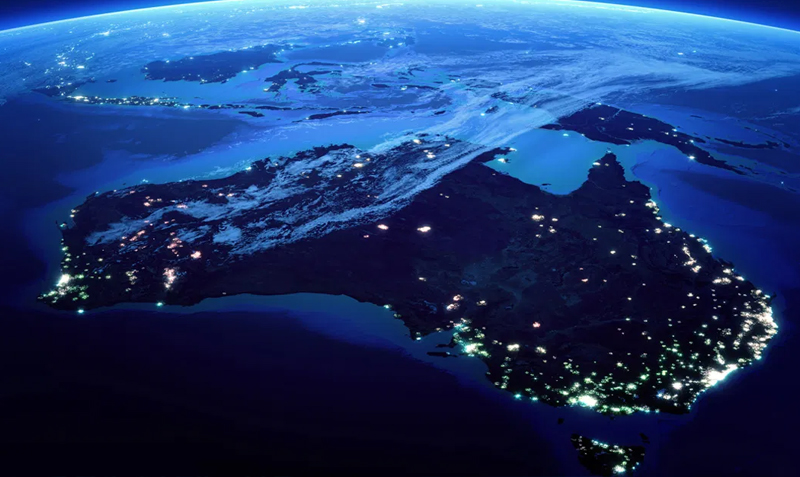Reflecting on the last months of fire, flood and pandemic crisis, few would argue that despite getting through, there is room for improvement. The three challenges that stand out for the future:
-
-
-
- Withstand – improving how we collectively plan and withstand extreme events;
- Reduce Impact – how we reduce the destabilising economic, health and social impacts that result; and
- Recover Quickly – how we build capability to recover more quickly.
-
-

As is often the case, when it comes to the ‘how’, the answers are always more elusive – particularly against a backdrop of a weakened economy where citizens and businesses face the reality of their own post-Covid fallout. Combine this with ongoing Covid related social anxiety and despite the best of intentions, the focus is very much on the here and now.
If nothing else, learnings over recent months signal a need for greater Sovereign Resilience – this is not something that can be ignored and certainly not by our Government representatives.
To be clear, I am not advocating an isolationist or protectionist response. Sovereign Resilience is about building sovereign capability. This includes prioritising investment in strengthening Australia’s self-determination, improving our ability to adapt and respond rapidly and maturing the sophistication of how we assess and mitigate risk.
Self-determination has many characteristics but if the recent crises, particularly the Covid pandemic, have taught us anything, it is that Australian self-determination (our ability to control our own sovereign destiny) works best when:
-
-
-
- the ultimate holding companies of businesses and supply chains are majority owned by Australians,
- their operating bases are located in Australia and serviced by Australian citizens; and more importantly,
- subject only to Australian legal jurisdiction. This must be to an absolute level and not merely beyond “inconceivable” that extra jurisdictional interference is possible.
-
-
Self-determination is also not about picking winners or government trying to ‘protect’ businesses and industries – though from time to time this does happen where unanticipated events require short term support to stave off collapse.
Self-determination is about Australian organisations and especially Government, understanding the impact and projected power of their ‘spending’ decisions; i.e., their impact as customers on the ability of Australian businesses (large and small, start-ups and the well-established), to raise additional growth funding/capital based on their track record of attracting profitable revenues from sophisticated customers i.e.government. Organisations, who, by definition, are demonstrating real innovation and value to their customers.
Businesses are typically not so naïve to think that government grants and hand-outs are the panacea for their business success. This is not what business is looking for. If citizen taxes are to be spent anywhere it would seem to make sense buying Australian capability where it exists and is (obviously) competitive in preference to companies that are non-Australian owned, are based and operated outside Australia, are minimising Australian tax liabilities and are subjected to foreign legal jurisdictions.
On the issue of adaptability, Sovereign Resilience translates to our ability to rapidly pivot and respond to changing and unforeseen extreme circumstances.
This obviously requires investment in sophisticated planning and preparation but even more critical is understanding and identifying the potential ‘triggers’ for events/scenarios; be they subtle changes in the Indian dipole or rumours emerging from wet markets in remote parts of the world.
The Australian Government’s 232-pages 2019 Australian Health Management Plan for Pandemic Influenza shows an exceptional level of planning diligence. But enhanced adaptability also requires a fundamental understanding of the capacity of critical national industries to pivot rapidly to a new world norm (severely disrupted supply, manufacturing, logistics and transport chains etc) based on more than a second guessing of ‘signs’. Sensing and understanding the ‘signs’ – the triggers – in advance of their momentum is an invaluable head start to adapting an effective response.
Perhaps not surprisingly, from my perspective, adaptability is greatly facilitated by smart technology, specifically data, digital and cloud technologies that in combination provide the means to inform and enact rapid action.
Adaptability also encompasses crisis leadership qualities. These are regularly demonstrated within the top teams and typically inculcated in military and emergency responder organisations, but otherwise less visible. The high public and political regard that Shane Fitzsimmons and his peers received during the bushfires is testament to the importance of quality leadership in building and sustaining community trust. This same sort of leadership is required beyond the sharp end of the crisis and across the fabric of the nation, arguably, established well in advance of any crisis event and by anyone that sets the tone of response.
Tantamount to Sovereign Resilience must be the capability for sophisticated risk assessment, mitigation and management. This extends well beyond a routine risk impact and likelihood table and mitigation plan. It must include thinking the unthinkable scenarios about the ‘known-unknowns’ in the manner that the Australian Defence Force undertakes as part of sovereign defence planning. because events can last for longer, affect more of the globe and inconveniently occur simultaneously.
The resultant scenarios, as part of their sophisticated risk probability analysis, should consider assessment of subsequent economic and societal impact assessments. While I have no doubt, this is done to a degree, recent bushfires and a pandemic must surely question how well and effective this has been. Sovereign Resilience requires we do this better, and more transparently. Publishing and regularly revising risk-based assessment and planning information will not only improve societal engagement but also enhance support for the necessary long-term investment trade-offs relative to shorter-term headline grabbing budgetary demands, that inevitably need to be made.
It is this last point that I think we are yet to come to terms with.



